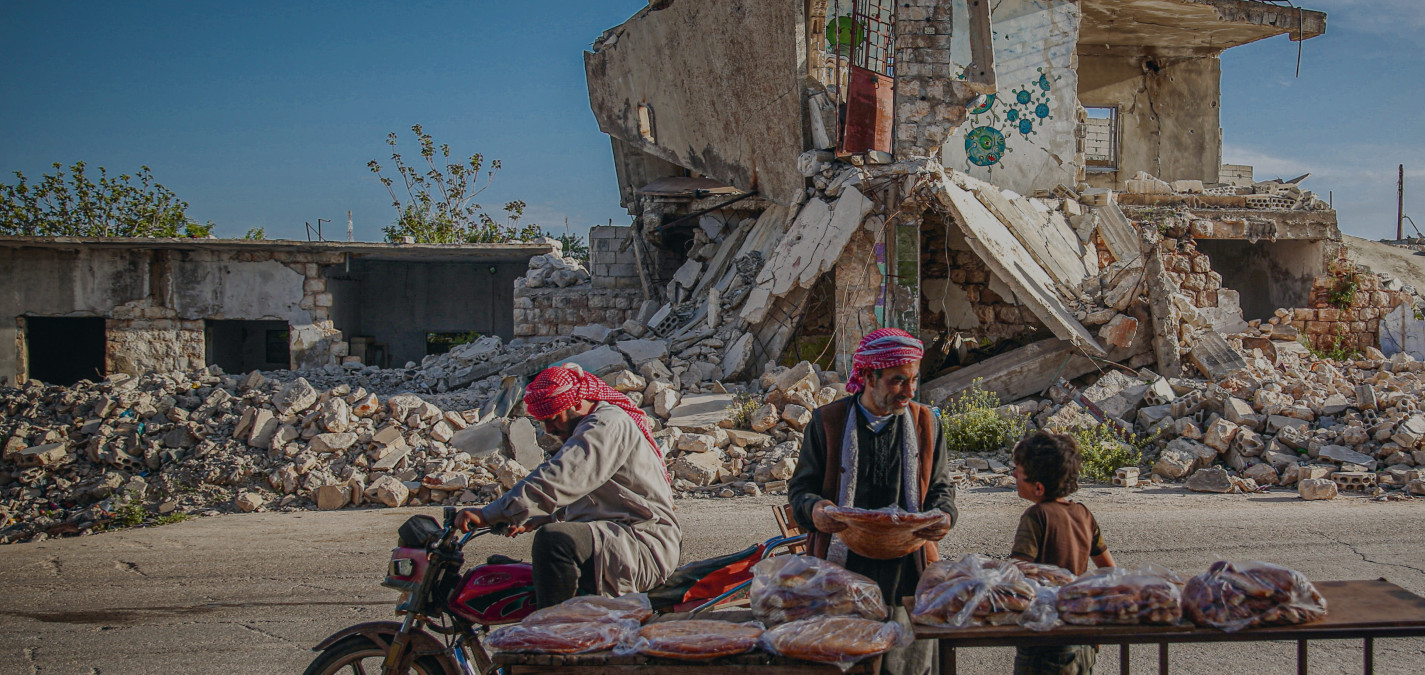Global Hunger Index report 2021: Hunger and Food Systems in Conflict Settings
Published: Dec 2, 2021 Reading time: 5 minutes Share: Share an articleChronic hunger affects up to 811 million people world-wide, and 155 million are currently in the midst of an acute food crisis. The plan was to end hunger by 2030—a commitment made by the international community through the Agenda2030—but the fight against hunger is dangerously off track. Multiple crises are reducing the chances of success. Wars and violent conflicts, the climate crisis, and the COVID-19 pandemic and its impacts are slowing progress in the fight against hunger. For the first time in 20 years, extreme poverty is on the rise, and global undernutrition rates have begun to climb again after decades of falling. The level of hunger in 2021 offers few grounds for optimism.

Our food systems—from production, harvesting, processing, and transport to the supply of inputs, financing, marketing, and consumption—are not sufficiently adapted to the current challenges we face. To win the fight against hunger by 2030, the current main drivers of hunger—conflicts, climate change, and the economic crisis un-leashed by COVID-19—must be addressed while we trans-form our food systems.
The Global Hunger Index (GHI) assesses hunger throughout the world. This annual reference report analyses the available data at global, regional, and national levels. This report is published by People in Need’s partners Welthungerhilfe and Concern Worldwide from Alliance2015. The 2021 report is the 16th report in this series, with this issue highlighting hunger and food systems in conflict settings.
Key GHI Results for 2021
The fight against hunger is dangerously off track. According to the latest GHI projections, the international community will not be able to achieve the Agenda2030 goal of ending hunger throughout the world by 2030, if we continue on the path we have been on so far. At the current rate, 47 countries have no chance of achieving a low level of hunger by 2030. Especially concerning is the situation in Africa South of the Sahara and South Asia. Somalia has the worst GHI score at 50.8, falling into the extremely alarming category. In Chad, Madagascar, Yemen, the Central African Republic, and the Democratic Republic of the Congo, the level of hunger is classified as alarming. Despite limited data availability for Burundi, the Comoros, South Sudan, and Syria, the information available indicates that these countries fit into the GHI category of alarming.
Hunger is being driven by the climate crisis, the coronavirus pandemic, and war and conflict. Of the 155 million people throughout the world currently suffering from an acute food crisis, emergency, or catastrophe, 99.1 million live in conflict-hit regions within 23 countries. More than half of all under-nourished people live in countries affected by conflicts and violence. The number of violent conflicts is growing. War and violence are increasingly leading to hunger, and hunger is being weaponized. The reverse is also true, as regional nutrition crises can play a role in provoking conflict too. However, this also means that better food security can contribute to peace.
In addition, it is estimated that the effects of climate change could subject an extra 78million people to chronic hunger by 2050, with at least half of this number residing in Africa South of the Sahara (FAO, IFAD et al.).
The coronavirus pandemic and its effects are also aggravating hunger. Between 2020 and 2022, an additional 9.3 million children could suffer from stunting and 2.6 million from wasting in low-and middle-income countries, primarily in Africa South of the Sahara and South Asia, the regions where child undernourishment is already most prevalent. Child mortality, a GHI indicator, is expected to rise due to the pandemic.
A new trend threatens to reverse progress. Since the year 2000, hunger rates have improved throughout the world, while poverty has receded. However, global undernourishment rates, one of the GHI indicators, are now rising again, which suggests we can also expect the other indicators to worsen. According to projections by the UN Food and Agricul-tural Organization (FAO), there will be around 657 million undernourished people in 2030, which amounts to approximately 8 percent of the global population. Were it not for the coronavirus pandemic, this figure would have been lower by about 30 million people.
Hunger remains stubbornly high in Africa South of the Sahara and South Asia. In Africa South of the Sahara (GHI score: 27.1) and South Asia (GHI score: 26.1), hunger levels are serious, whereas the other global regions are categorized as low or moderate. The increasing prevalence of child undernourishment in Africa South of the Sahara is a particular cause for concern, having risen from 19.6 percent in 2014–2016 to 21.8 percent in 2018–2020. South Asia and Africa South of the Sahara have the world’s highest rates of undernourishment as well as of wasting and stunting in children. In many countries in both regions, people are highly vulnerable to the current drivers of hunger, which include climate change, wars, con-flicts, and the coronavirus pandemic with all its attendant effects.
Policy Recommendations
Everybody has the right to food, and no one should be left behind. To end war and conflict, we need reconciliation and political solutions as well as an integrated approach that combines peace and resilient food systems. This combination can improve food security worldwide. We can only successfully meet coming challenges through sustainable food systems and greater resilience. Governments and donors must therefore live up to their responsibilities and contribute to making peace and reconciliation possible. This also means that actors in humanitarian aid and development cooperation must engage in systemic and ongoing analysis of the context while strengthening inclusive, locally led initiatives. Most crucially, the words of the UN Food Systems Summit must be followed by deeds, addressing the structural challenges in our food systems and ensuring careful planning as well as needs-based funding.



